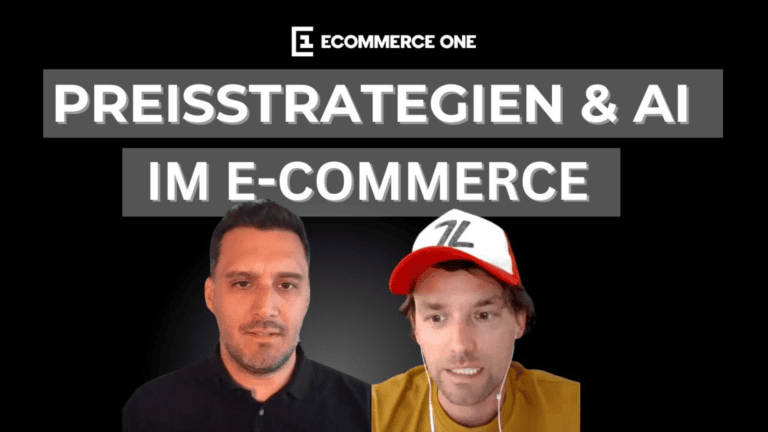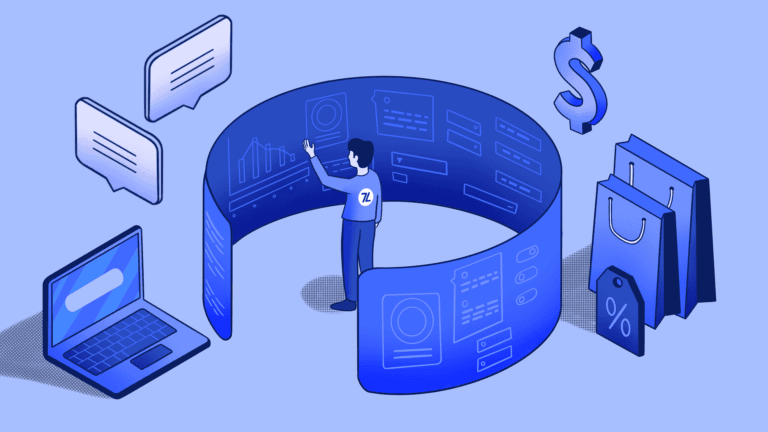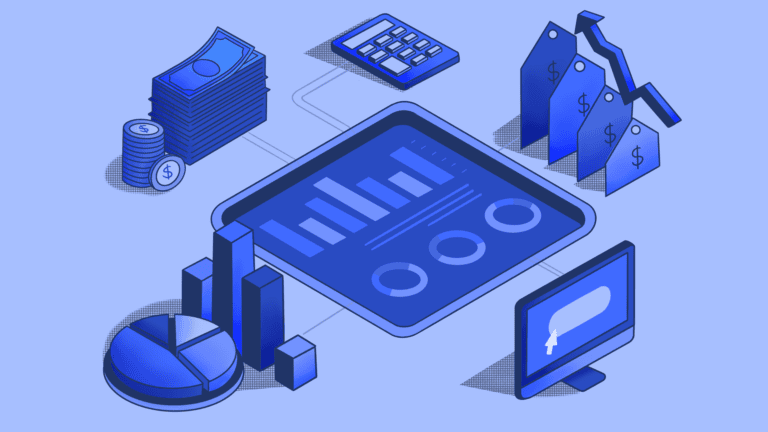Supply chain continues to be the biggest setback
Fast forward to today, whether businesses are going back to “normal” yet is not an easy question. Covid has slowly passed away and life around the world is getting its normality back – so why are we still talking about supply chain problems? One of the reasons is that China,the biggest exporting country, shows no sign of stopping its “zero-Covid” strategy, deepening the supply chain bottleneck of the world. Take the online furniture retailer Made.com for example, they have already forecast to cut revenue in 2022 due to the ongoing short of stock and the deferred revenue in 2021 which was mostly caused by shipping delays. The outlook of the retail industry in general is no different. The pandemic, however, is not the sole driver.
The recent geopolitical events between Russia and Ukraine have contributed to the persistent shortage of supply. If China is where most goods are made, Russian railway infrastructure helps deliver them to the West. The European car industry (Volkswagen stopped some production in Germany) is negatively affected as wiring harnesses manufactured in Ukraine cannot be delivered. In addition, transportation costs are anyway increasing heavily due to war-induced rising oil and gas prices.
“The best rate of inflation is the one no one notices.”
Prices of goods and services in the US have increased 8.5% and in the eurozone 7.5% in March 2022. The target rate of inflation in both the US and Eurozone is 2% to maintain price stability. Surging gas prices are said to be the main driver behind this. Inflation affects everyone and has put a great burden on retailers and businesses to set the right prices. Recently, Amazon announced to levy a 5% “fuel and inflation surcharge” on online merchants in the US, pressuring them to increase their prices. Due to the higher inflation rates, labor costs also increased and it is simultaneously compounded by the labor shortage. The increasingly sizable cost pressure is the reason why now is high time for (pricing) managers to review their pricing strategies.
In response to inflation, adjusting prices is a natural reaction. Indeed, we have seen many big companies and retailers publicly announce to shift these price pressures onto their consumers. But did you know that just simply increasing prices can hurt your future sales and, even worse, customer loyalty?
5 ways pricing can help with inflation and supply chain
1. Discounts are more popular. Do them right
When mark-down pricing is optimized, out-of-style and off-season items are taken care of while increasing sales from higher discount demand. Markdown pricing still plays a central role for retailers in avoiding large margins and profit losses. AI (artificial intelligence), dynamic pricing and machine-learning algorithms can help by suggesting optimized prices and thereby reducing markdowns. Machine-learning-based dynamic pricing software has the unique capacity to learn from discount campaigns and to continually adapt and improve.
Only by coordinating the amount and timing of your markdowns can you effectively minimize risks and maximize profits. The results of the pricing forecast allow the algorithm to raise and lower prices, automatically optimizing markdowns and profits for a given item throughout its lifecycle. Retailers determine how often the prices should be updated, with possibilities ranging from weekly to multiple times a day. Omnichannel retailers can also identify the ideal prices for their respective touchpoints, from their online shops, shopping apps, or retail stores.
2. Private labels that are cheaper product substitutes are higher in demand
Due to their prices, private label products tend to increase in popularity during times of economic downturn as many face financial hardship. Once consumers are introduced to a private label product and find it a suitable alternative, they are not quick to abandon it for future purchases. For retailers with established private label brands, it’s a great time to optimize their pricing strategies to make sure their private label products perform as strongly as possible against competing brand.
Machine learning-based pricing software is essential to private label pricing strategy. It provides a simple, straightforward way to gauge consumer purchasing behavior and the influence of pricing on demand. By relying on both internal consumer purchasing data and external factors that influence consumer behavior and demand, it becomes possible to optimize prices for private label brands without needing to rely on competitor price data.
Profit increases on average of 10% on average are possible for e-commerce retailers using with machine learning-based pricing software. 7Learnings has demonstrated this capability with A/B tests with customers from e-commerce and other retail sectors.
3. Reprice your products. Not all products get the same demand so why would their prices be?
The best price can become a selling point for potential customers at the decisive moment. This is why repricing, the strategic optimization of product prices, is considered an important instrument for increasing sales. Online retailers use the possibilities of automation in repricing to reduce the manual effort of market observation. They hope this will enable them to react flexibly to price adjustments by their competitors and to adjust their offer at the decisive moment.
Repricing often takes only a few pricing factors into account, but fails to systematically measure price willingness. Nor does it take into account the effects of other factors, such as the time of year, the weather, or the company’s own marketing activities. AI-based technologies, on the other hand, can process much larger volumes of data. Machine-learning algorithms are used to measure price elasticities: This makes it possible to forecast how price adjustments will affect customers’ willingness to buy as well as sales and profits. Pricing is dynamic and automatically reflects changes in customer behavior. This eliminates the need for complex administration of pricing rules.
Retailer A
173,99 €
Retailer B
179,99 €
Retailer C
168,99 €
167,99 €
Retailer D
167,99 €
166,99 €
4. Price products according to your stock
For many retailers, inventory plays an important role in determining item prices. It is advisable to have a pricing system in place that can react quickly to stock constraints. Sudden supply chain disruptions or a surge of demand for certains products, such as those seen during the corona crisis, can make stock constraints a critical factor when determining prices.
Inventory-based pricing, also known as stock-based pricing, is a form of dynamic pricing where prices are adjusted depending on stock levels or forecasts. While lots of factors go into determining an item’s price, including seasonality, day of the week, competitor prices, etc. The actual amount of a given product you have on hand is extremely important when calculating prices. Automated pricing software puts the retailer in complete control of their stock, making it possible to implement strategies that further business goals.

5. Cross-marketing optimization
Data and analytics can help customers study the willingness of pay throughout the customer journey. From our own study, a joint optimization of both marketing and pricing can increase profits by up to 15%. For example, an optimization can be run to forecast the impact of pricing decisions while taking 10% coupon spending into account.
Prices are optimized towards set targets and marketing strategies. In practice, price forecasts can be used to gauge the impact of different coupon rates, SEA budgets, and discounts on sales and profits, allowing retailers to find the ideal amounts for each. This allows retailers to determine what the optimal SEA spend level for their company is, by creating optimizations for different SEA spend scenarios.
In order to do this you need the right technology to measure price elasticities on a product level. With our discount optimization feature, we are able to do this. Our tool provides retailers the ability to find the sweet spot between customer’s willingness to spend, the coupon rate, and the product price points which will provide the maximum profits.
Through our feature, we offer the following tools:
By increasing or reducing your discounts
By increasing or reducing your coupon rate
By increasing or reducing your SEA spending
Conclusion
“Don’t upset your customers with your burdens: benefit from lightening theirs”
Pricing managers should approach the task of price adjustment or price increase, if you will, with a customer centric mindset. The rule of thumb is that customer loyalty and brand image are the backbone to your business and what can set it apart from competitors. If done correctly, you will immediately notice a stronger willingness to accept a price increase from demand. Our advanced pricing technology can be tailor to merge your sales or profit margin targets and marketing goals – together. It is our job to guarantee that these results are sustainable profitable, and on autopilot. Want to know how more? Feel free to get in touch, and book a demo call!
How 7Learnings’ predictive pricing approach can help you optimize your prices
Machine learning is a new technology, but it is rapidly establishing itself in the enterprise world. Price optimization is one use case where machine learning has already proven its worth. After the global players, smaller retailers are now following suit and introducing machine learning-based price optimization. This is because in the increasingly complex and fast-paced market conditions, manual pricing is reaching its limits. Previous mathematical models are too simplistic, and human intervention makes predictions prone to error.
Companies that forgo the support of machine learning in price optimization will feel competitive disadvantages in the foreseeable future. This is because the new technology works much more reliably and significantly faster.
Why is it worth investing in smart price optimization tools? The applications are an easy way to increase sales and profits without having to question fundamental pillars of strategy and offering. They deliver maximum results with minimum investment. Meanwhile, it is no longer necessary to develop machine learning models from scratch. Modern tools like 7Learnings’ pricing solution make it affordable for any company to get started with machine learning-based pricing.
- Utilize leading deep learning technology: Machine learning has changed the retail pricing landscape. With 7Learnings’ powerful machine learning-based software, you access agile, adaptive technology that will keep you in pace with your competitors.
- Elevate your marketing and pricing strategies: Tap into the full potential of your data and holistically optimize your marketing activities and pricing decisions, looking and correlated and influential factors.
- Reach the highest level of automation: Our intelligent software takes the guesswork out of pricing and reduces manual effort. With a few clicks, you can forecast the impact of pricing changes on business goals. It’s the most intuitive price steering method!
- Make pricing predictable: With predictive pricing, retailers no longer need to manage a complex set of rules for pricing. Instead, they define their goals and the technology determines which prices will help them achieve them as quickly as possible.
- Work with industry experts: Our team of data scientists has vast experience in retail pricing, and understand the unique challenges and needs of the industry.
With our predictive pricing software, we have helped some of the leading online retailers in Europe to improve their pricing processes through machine learning. Optimizing both marketing and pricing activities is complex, and we provide a simple and effective solution. To learn more about the potential of cross-marketing optimization for your business, sign up for a free demo here.



